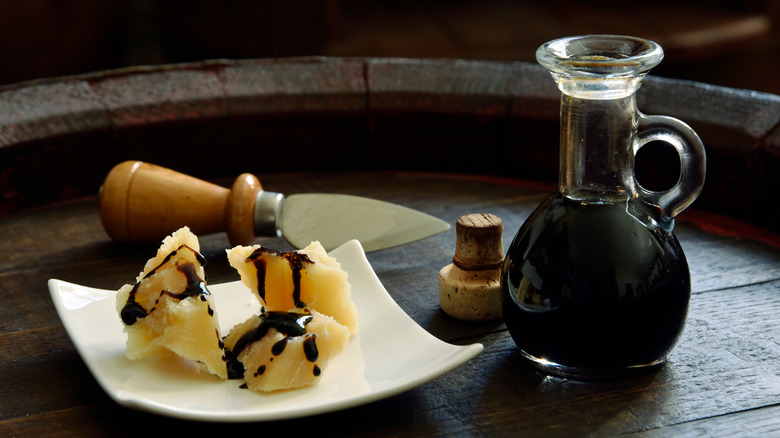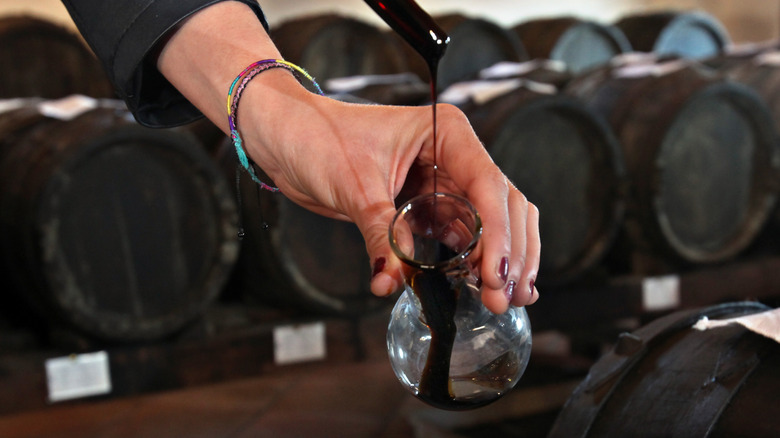Here's How The Most Expensive Balsamic Vinegar In The World Is Made
Balsamic vinegar might be quite commonplace in many restaurants and kitchens, but just because it is widely available doesn't mean all balsamic is the same. While we dive into everything you need to know in our ultimate guide to balsamic vinegar, only a small portion of the dark, syrup-like liquid is the best, most expensive variety. But what makes it so special — and worth the price tag?
It all begins in Modena and Reggio-Emilia provinces in Italy where official balsamic with a protected origins designation (DOP) is made. Starting with grapes grown in designated areas in these provinces, the fruit is then pressed. But the skin, seeds, and stems are left in, which is what defines the mixture as grape must; this is simmered until reduced by about half, filtered, and left to cool and ferment. It's the fermentation and the length of time the vinegar is allowed to age that often causes it to be so expensive. Another contributor is the skilled transference of different amounts of the aging liquid from barrel to barrel over time. Though traditional balsamic is aged for at least 12 years in barrels, the most expensive bottles can reach an age of around 100 years and will cost over $1000. Apart from 12-year bottles, it's common to see 18- and 25-year bottles of balsamic, too.
There's a scarcity that drives high prices
So why is balsamic vinegar so expensive apart from the aging process? Part of it is rareity: No other vinegar is made using the same methods as balsamic. Because the best and most expensive balsamic (the DOP variety) is made from nothing but grape must, its price reflects the purity and quality. Not only does the single ingredient reduce by up to half as it is made, but each batch requires over a decade to mellow its harsh notes. This helps the flavors develop and allows it to become sweeter as more biting notes soften with the fermentation and aging process.
When shopping for quality balsamic vinegar, look for the origin, age, and list of ingredients. While any balsamic marked with a DOP designation ensures its quality, others might have added ingredients to improve the flavor without increasing its production cost. Bottles labeled IGP can have other ingredients added, as well as grape must. The best bottles should be made with a single ingredient, come from Modena or Reggio-Emilia, and be aged for at least 12 years. Don't be afraid to spring for a quality bottle — rest assured it will be delicious and well worth the price, but be sure it's truly balsamic vinegar. There are also commonly fake balsamic vinegars, so it's better to opt for one with signs that prove its quality. With a great bottle and a new appreciation for what's inside, try one of our 41 unique ways to use balsamic vinegar.

